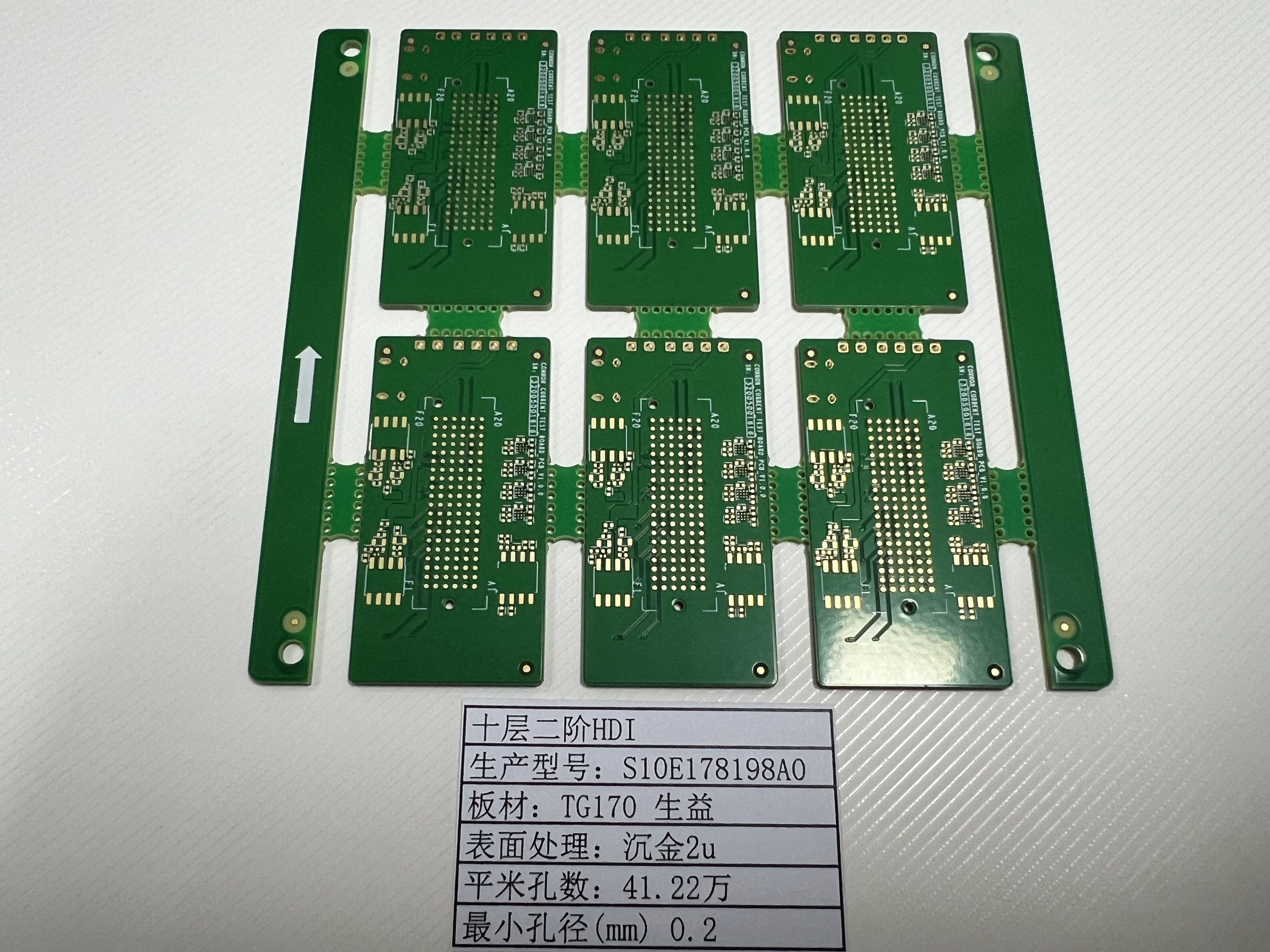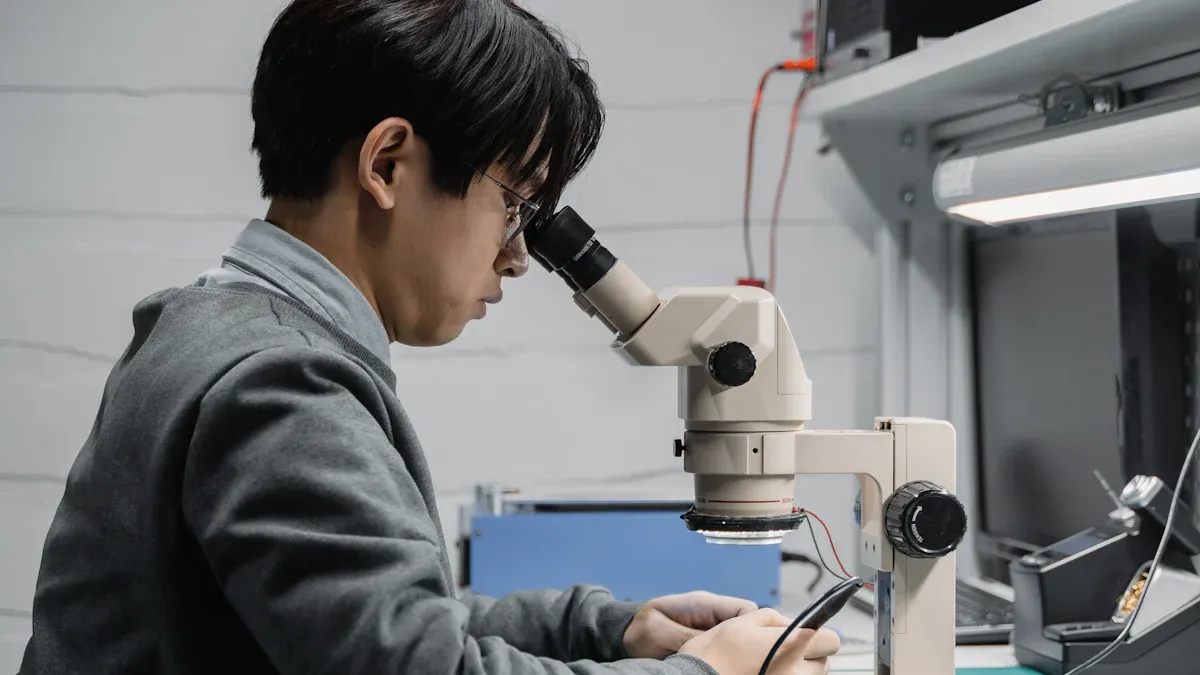Microvia Reliability in HDI PCBs: Manufacturing Techniques to Prevent Common Failure Modes
Microvia reliability plays a key role in the performance of HDI PCBs. Recent data shows that microvia pitch affects durability, with tighter spacing improving reliability in high-density interconnections. Failures in microvia structures can disrupt PCB performance, especially during thermal cycling tests. The electronics industry warns that undetected microvia issues threaten both safety and cost.
Parameter | Value/Range | Context |
|---|---|---|
Resistance change | Indicates failure during reflow | |
Open temperature | ~199.8°C to 239.2°C | Microvia failure during reflow |
Reflow cycle-to-failure | 1 to >6 cycles | Shows microvia reliability variability |
LT CIRCUIT delivers advanced PCB solutions that support the demands of modern electronics and ensure reliable microvia performance.
Key Takeaways
Choosing the right materials and controlling manufacturing processes are essential to build strong, reliable microvias in HDI PCBs.
Design strategies like staggering microvias and limiting stacked layers reduce stress and prevent common failures such as cracks and delamination.
Thorough reliability testing, including thermal cycling and resistance checks, helps detect defects early and ensures long-lasting PCB performance.
Microvia Reliability and Failure Modes

Microvia Structure
Microvias form the backbone of high-density interconnections in modern HDI PCB designs. Engineers create these tiny vias with a conical frustum shape, connecting one layer to the next. Most microvias use laser drilling, which allows for precise holes as small as 15 micrometers. After drilling, copper plating fills the microvia, ensuring electrical continuity and signal integrity. Designers often choose staggered or stacked microvias for multi-layer PCBs, but staggered structures offer better reliability. The aspect ratio, or the depth-to-width relationship, must stay near 0.7:1 to maintain microvia reliability and prevent structural weaknesses.
Common Microvia Failure
Microvia failure can disrupt PCB performance and reduce product lifespan. Industry reports highlight several failure modes:
Corner or knee cracks at the base
Interfacial separation between the microvia and the target pad
Pad cracks or microvia pull-out
These failures often appear during thermal cycling or reflow processes. Testing methods such as Interconnect Stress Testing (IST) and thermography help detect early signs of microvia failure, like resistance increases or hot spots. Statistical data shows that robust microvias can survive up to 1000 cycles at 190°C, while marginal ones fail below 500 cycles.
Causes of Microvia Failure
Several factors contribute to microvia reliability issues:
Thermomechanical stress from mismatched expansion rates between copper and dielectric materials
Material defects, such as cavities or inclusions in the copper plating
Poor process control, including improper plating thickness or excessive brightener additives
Design choices, like stacking more than two microvias or placing microvias on buried vias
Industry experts recommend staggering microvias and limiting stacked structures to two layers. New standards and microvia reliability testing methods, such as IPC-TM-650, help manufacturers like LT CIRCUIT detect latent failures and improve overall reliability. LT CIRCUIT uses advanced materials and strict process controls to enhance PCB performance and ensure long-term microvia reliability.
Manufacturing Techniques for Microvia Reliability

Material Selection
Material selection forms the foundation for microvia reliability in HDI PCB manufacturing. Engineers choose dielectric materials with high thermal stability and low coefficients of thermal expansion, such as Isola FR408HR and Nelco N7000-2HT. These materials support precise laser drilling and withstand repeated thermal cycling. Selecting the right copper thickness and substrate options balances electrical performance and mechanical strength. Advanced materials like high-performance thermoplastics and conductive inks further improve microvia electrical properties and thermal management. Industry standards, including IPC-6012 and IPC-6016, guide manufacturers in choosing materials that meet strict reliability requirements. Quality control teams use advanced imaging and microscopy to verify microvia integrity, ensuring that each PCB meets the demands of modern electronics.
Tip: Smaller microvias enable higher component density and shorter signal paths, which enhances overall PCB reliability and performance.
Process Control
Process control plays a critical role in preventing microvia failures. Manufacturers implement 100% Automated Optical Inspection (AOI) and intensive process auditing to detect defects early. Statistical process controls monitor key parameters such as microvia diameter, capture pad size, depth uniformity, and plating quality. Advanced laser drilling equipment ensures precise hole formation with minimal taper and optimal annular rings. Metallization processes, including electroless copper seed layer deposition followed by copper electroplating, create void-free, reliable microvias. Studies show that strict process control reduces defects like cracks, delamination, and voids, which can compromise PCB reliability. Detailed defect rate analysis and rigorous aging tests, including resistance measurements and thermal cycling, confirm that robust process control is essential for enhancing reliability and performance.
Cost | Pattern Precision & Line Control | Manufacturing Complexity & Automation | Environmental Impact & Material Efficiency | Suitability/Application | |
|---|---|---|---|---|---|
Subtractive Process | Low | Limited fine-feature capability | Moderate | Higher material waste | Cost-sensitive, mid- to low-end production |
Additive Process | High | Superior resolution for HDI | High | Minimizes chemical waste and copper usage | High-density interconnects, miniaturized devices |
Laser Direct Imaging (LDI) | High | High-precision image transfer | High | Reduced chemical use | HDI, rapid prototyping, small-batch customization |
Pattern Plating | Moderate to High | Enhanced current capacity | High | Moderate | High-power applications, automotive electronics |
Microvia Stacking and Staggering
Key design strategies such as microvia stacking and staggering directly impact PCB reliability. Staggered microvias distribute mechanical and thermal stress more effectively than stacked microvias, especially in multilayer HDI designs. Industry benchmarks, including IPC-T-50M and IPC-2226, recommend staggered microvias for improved durability. Comparative studies show that staggered microvias endure more thermal cycles and reduce the risk of cracks or delamination. While stacked microvias save board space and support controlled impedance, their reliability decreases as the number of layers increases due to stress concentration at the via neck. Manufacturers often limit stacked microvias to two layers and prefer staggered arrangements for multilayer PCBs to optimize reliability and performance.
Aspect | Stacked Microvias | Staggered Microvias |
|---|---|---|
Reliability (Multilayer) | Lower for 3+ layers due to stress and alignment challenges | Higher due to reduced mechanical stress |
Manufacturability | Requires precise alignment and drilling | Simpler, less expensive, more reliable |
Space Efficiency | Saves space with vertical alignment | Requires more board space |
Microvia Reliability Testing
Microvia reliability testing ensures that each PCB meets industry standards for durability and performance. Manufacturers use standardized microvia testing procedures, such as Interconnect Stress Testing (IST) following IPC-TM-650 methods 2.6.27 and 2.6.7.2. These protocols involve attaching test coupons to PCBs, applying DC current to induce thermal cycling, and monitoring resistance changes. A resistance increase of more than 5% signals a failure. Testing microvias with D coupons, designed per IPC-2221, simulates real-world stresses and validates microvia integrity. Additional tests include environmental stress screening, vibration, mechanical shock, and cross-section analysis. Microsection analysis and copper thickness verification, performed after thermal stress cycles, confirm the effectiveness of microvia reliability testing. These methods accelerate data collection and help manufacturers identify latent defects, supporting the goal of preventing microvia failures.
Note: Microvia reliability testing provides comprehensive and accelerated reliability assessment, reducing the time required for traditional board-level testing from months to days.
LT CIRCUIT Solutions
LT CIRCUIT leads the industry in enhancing reliability and performance for HDI PCBs. The company uses advanced materials, precise laser drilling, and strict process control to produce high-quality microvias. Automated Optical Inspection and statistical process controls ensure each microvia meets exacting standards. LT CIRCUIT follows IPC guidelines for microvia design, stacking, and staggering, optimizing each PCB for durability. The company offers comprehensive microvia reliability testing, including IST and D coupon analysis, to validate product integrity. LT CIRCUIT’s commitment to innovation and quality control positions it as a trusted partner for customers seeking reliable HDI PCB solutions.
Manufacturers improve microvia reliability in HDI PCB production by focusing on material selection, process control, and thorough reliability testing. Studies show that strong process control and testing prevent microvia cracks and voids. For dependable PCB solutions, LT CIRCUIT offers advanced microvia technology and strict quality standards.
FAQ
What is microvia reliability and why does it matter in HDI PCBs?
Microvia reliability measures how well microvias perform over time. Reliable microvias help maintain signal integrity and prevent microvia failure in high-density interconnections.
How do manufacturers test microvia reliability in HDI PCBs?
Manufacturers use microvia reliability testing, including microvia testing procedures like IST and D coupon analysis. These tests check for cracks, voids, and other issues affecting performance.
What are key design strategies for preventing microvia failures?
Key design strategies include staggering microvias, using advanced materials, and following strict process control. These steps help in enhancing reliability and preventing microvia failures in HDI PCBs.
See Also
Essential Design Tips For Reliable High-Density HDI PCBs
Evaluating Costs And Benefits Of Advanced HDI Microvia Designs
Explore Cutting-Edge Techniques For HDI PCB Prototyping Now
Effective Methods To Achieve Quality Control In PCB Production
